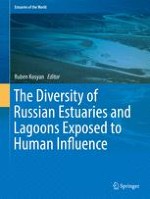2017 | OriginalPaper | Buchkapitel
5. Lagoons of the Smallest Russian Sea
verfasst von : Marina Krylenko, Ruben Kosyan, Vyacheslav Krylenko
Erschienen in: The Diversity of Russian Estuaries and Lagoons Exposed to Human Influence
Aktivieren Sie unsere intelligente Suche, um passende Fachinhalte oder Patente zu finden.
Wählen Sie Textabschnitte aus um mit Künstlicher Intelligenz passenden Patente zu finden. powered by
Markieren Sie Textabschnitte, um KI-gestützt weitere passende Inhalte zu finden. powered by
